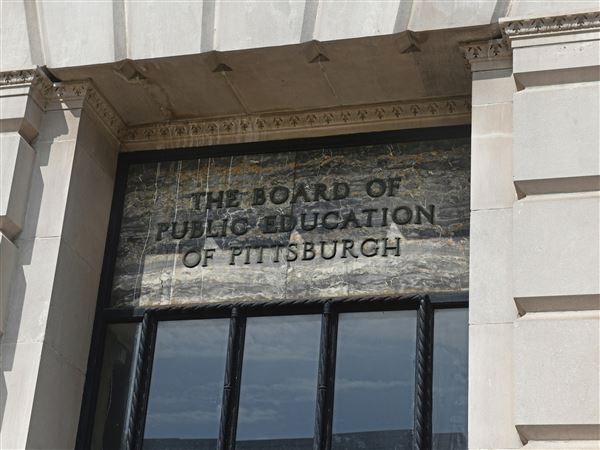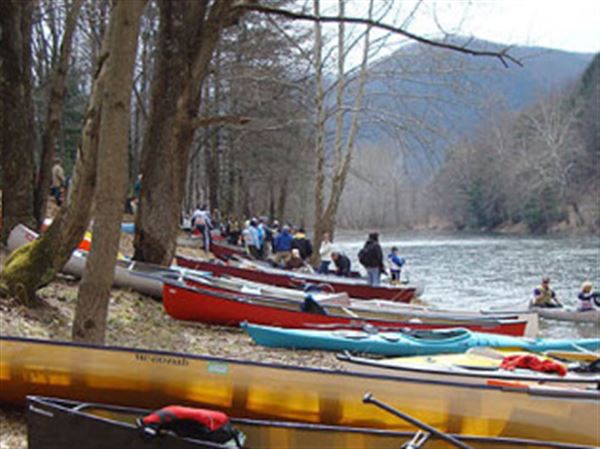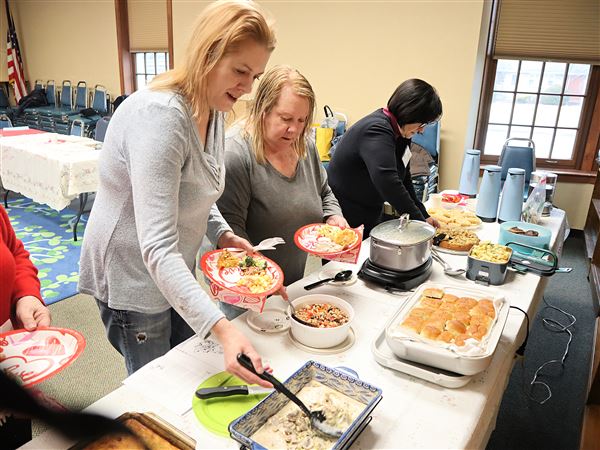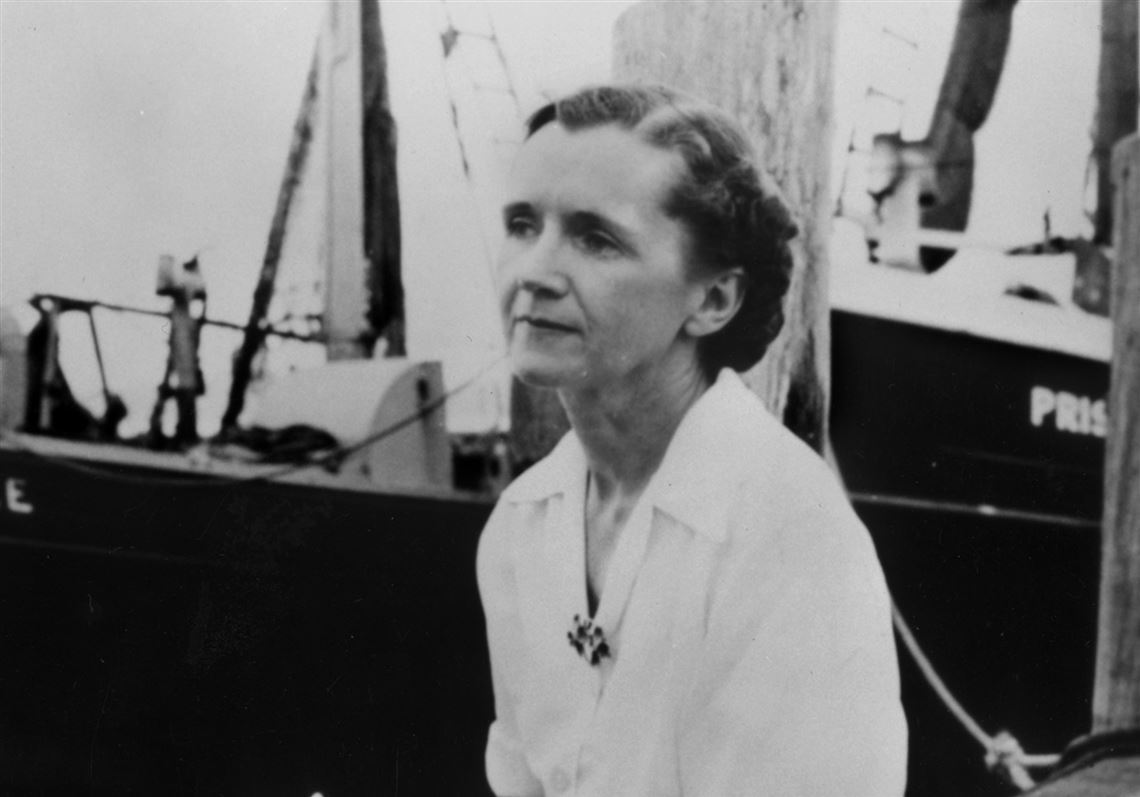A Pittsburgh native’s landmark book about toxic chemicals in the environment is 60 years old this month. In 1962, Rachel Carson’s “Silent Spring” raised the alarm about careless pesticide use in agriculture and pest control and offered an early warning about the dangers of “use-first-and-ask-questions-later” synthetic chemistry.
Her critique and analysis are still relevant today, whether the topic is plastic pollution, PFAS chemicals, or motor vehicle tire emissions. For what Carson uncovered then was how wayward and unquestioned chemical use could insinuate itself into the ecological order of things to the point where “no birds would sing.” Chemical pesticides, she found, killed more than pests.
The book came when the golden horn of synthetic chemistry was yielding all manner of wonder products, then weaving themselves into the global economy, seen as progress and part of the good life. Dow, Du Pont, and Union Carbide were kings.
Rachel Carson grew up in Springdale and graduated with a biology degree from Pennsylvania College for Women (now Chatham University). She also collected a master’s from Johns Hopkins and worked for more than a decade at the U.S. Department of the Interior. She also wrote earlier best-selling books, such as “The Sea Around Us” in 1951.
“Silent Spring” first appeared as a three-part New Yorker magazine series in June 1962. It was more hard-hitting than anything she had previously written. A careful scientist and no wide-eyed radical, she called out the chemical industry, the agricultural establishment, and conventional science. And they didn’t like it one bit.
Her book was attacked as "biased," "emotional" and "alarmist." Others called it a hoax, science fiction, and in league with "The Twilight Zone" TV show. Carson herself was labeled a communist, an hysterical woman, a nature nut, and worse.
Monsanto Chemical Co., mimicking Carson’s opening parable of a town where bird song had vanished, offered in answer, “Desolate Year,” a story about an insect plague run amok without pesticides. The company published the story in its own magazine, sent it to the nation’s newspapers, and distributed thousands of copies. An industry scientist billed Carson as “a fanatic defender of the cult of the balance of nature.”
Yet she was among the first to signal, in a popular way, a new kind of pollution: the unseen kind, chemical pollution that could infiltrate biology at the cellular and molecular levels, bringing cumulative and generational harms to birds, fish, and humans. She told how chemicals concentrated or “bio-magnified” through food chains, and used clear examples to make her points.
DDT spraying of elm trees to fight Dutch Elm disease was killing robins, she explained, but not directly. The spray was aimed at eradicating the bark beetle, which spread the disease. The trees’ DDT-coated leaves, falling to the ground, were eaten by earthworms, which were eaten in turn by the robins, who then died of DDT poisoning.
Carson showed how insufficiently tested pesticides were being indiscriminately applied, often in aerial or other broadcast methods, killing beneficial species in the process while endangering farmers, farmworkers and public health. In her analysis, she not only elevated a new understanding of ecology and the environment, but importantly tied those fields to public health.
She did not call for outright bans of chemical pest control, but through her book, she helped advance environmental protection and chemical regulation. The changes she spurred began with the creation of the Environmental Protection Agency in 1970 and the U.S. phasing out DDT in 1972. It continued in later laws aimed at controlling pesticides and toxic substances, while inspiring new research on deeper chemical intrusions, such as endocrine-disruption.
“Silent Spring” remains a timely warning about the dangers of free-ranging synthetic chemical use, that is, use before all the effects are adequately understood. In the U.S. today, more than 80,000 chemicals are used in commerce, and each year another 2,000 new ones are added, about 7 every day.
Yet most of today’s 80,000+ chemicals have not been tested for safety or toxicity by any government agency. Even among the 2,500 “high production volume” chemicals (i.e. more than 1 million pounds created annually), nearly 45 percent lack adequate toxicological studies to evaluate their health effects on humans and wildlife.
Since the days of Rachel Carson, meanwhile, a massive “toxic trespass” has been underway. We’ve experienced an invasive, unwanted, and potentially harmful intrusion by all manner of chemical substances (now measured at the “micro” and “nano” levels) in air, water, soil, and all living things, including the human body. In 2009, the CDC’s Fourth National Report on Human Exposure to Environmental Chemicals (still a benchmark), measured some 212 chemicals in humans. Seventy-five appeared for the first time.
In March 2022, scientists confirmed they had found microplastics in human blood for the first time. And just last week (June 15, 2022), EPA warned that PFAS chemicals (there are some 4,000 of these) found in some drinking water systems, cosmetics, food packaging, firefighting foams and other uses, pose a greater danger to human health than previously thought.
Turns out, Rachel Carson’s alarm about synthetic chemistry in 1962 is much worse than she envisioned.
Jack Doyle publishes a popular history website The Pop History Dig. He lives in Pittsburgh.
First Published: June 23, 2022, 4:00 a.m.















